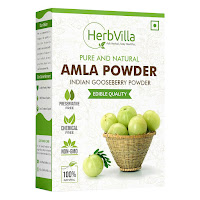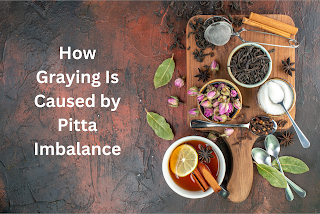Introduction
Welcome to a journey through Ayurveda, exploring the intricate link between Pitta Dosh and premature graying. Uncover holistic solutions for vibrant, naturally-hued locks in our quest for balance and timeless hair health. The age-old Indian medical system Ayurveda provides valuable insights into the relationship between the body, mind, and spirit. Ayurvedic medicine holds that imbalances in the doshas—Pitta, Kapha, and Vata—can cause several health issues, including early graying of the hair. Of all the doshas, Pitta is said to be particularly important for the health of hair follicles; an excess of Pitta dosha is frequently linked to the premature onset of gray hair.
Recognizing Pitta Dosh and Its Function
The fire and water elements represent the Pitta dosha, in charge of the body's transformational processes, such as digestion and metabolism. An imbalance in the Pitta can cause inflammation, overheating, and irritation of the hair follicles. According to Ayurveda, this imbalance is thought to be a contributing cause of premature graying.
Eating too spicy, greasy, salty, or acidic foods might increase Pitta dosha. Foods with a high heat content, such as spicy foods, coffee, and sour foods, might cause an imbalance in Pitta dosha.
Ayurveda Unveiled: Pitta Dosh and the Root of Premature Graying
1. Overheating of Hair follicles:
Heat and the Pitta dosha are closely related concepts. An overabundance of Pitta in the body can cause damage and early graying of the hair follicles by warming them.
2. Enhanced Metabolic Process:
The pita gland is in charge of the body's metabolism. An overactive pita gland can cause an elevated metabolism and influence the follicles that produce melanin. The pigment called melanin is what gives hair its color.
3. Scalp Inflammation:
An inflamed Pitta can lead to scalp irritation, interfere with hair follicles' regular activity, and hasten the graying process.
Ayurvedic Treatments to Balance Pitta and Prevent Graying:
1. Diet Pitta-Pacifying:
 |
| Incorporate Amla into your routine to pacify Pitta, healthy digestion, and balanced hair health. Shop Now |
2. Herbs from Ayurveda for Healthy Hair:
Include botanicals from Ayurveda that are known to calm Pitta. Amla, also known as Indian gooseberry, is high in antioxidants and vitamin C, which support healthy hair. Neem and Brahmi are also helpful for promoting hair vitality and Pitta balance.
3. Cooling Scalp Massages:
Pitta dosha can be balanced with frequent scalp massages using cooling oils. Use coconut oil, Brahmi oil, or amla oil to enhance blood circulation nourish the hair follicles, and gently massage the scalp.
4. Refraining from Overexposure to Heat:
Avoid using too much heat from the sun or heated styling appliances. It is thought that prolonged heat exposure aggravates Pitta dosha and causes premature graying.
5. Handling stress:
One major thing that can aggravate Pitta dosha is stress. Take part in stress-relieving activities like yoga, meditation, and deep breathing techniques to support general health, including the health of your hair, and to preserve emotional equilibrium.
6. Practices for a Holistic Lifestyle:
It is imperative to embrace a holistic lifestyle through Ayurvedic teachings. This entails adhering to a daily schedule, obtaining enough sleep, and drinking enough water.
In summary:
With a focus on Pitta dosha in particular, Ayurveda offers a comprehensive method for comprehending and treating premature graying via the lens of dosha imbalance. People can improve the health of their hair and possibly stop or slow the onset of premature graying through Pitta-balancing Ayurvedic treatments. Ayurvedic treatments are customized, and speaking with an Ayurvedic practitioner is recommended for advice specific to each person's constitution and imbalances. Those who apply these Ayurvedic ideas to their daily lives can start on a path to healthier, more colorful hair that represents harmony and wellness.
Tags:
Ayurvedic Treatments to Prevent Graying and Balance Pitta:
Pitta Dosh and the Root of Premature Graying
Recognizing Pitta Dosh and Its Function

